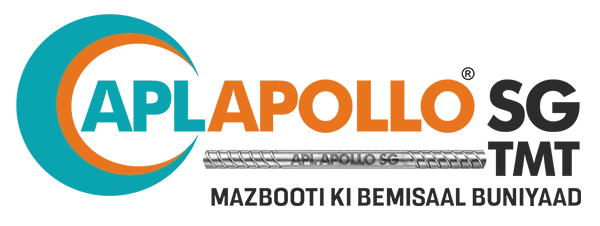
If you’ve ever held a TMT bar in your hand or seen one at a construction site, you’ve likely noticed a series of letters, numbers, and markings stamped along its surface. For most people, these marks are easy to ignore – but for anyone serious about quality construction, understanding them is crucial.
In today’s construction industry, where quality and accountability are everything, reading a TMT bar label isn’t just technical – it’s smart business. Whether you’re a homeowner, builder, or project engineer, being able to decode those bar markings can help you avoid counterfeit materials, ensure compliance, and make informed purchasing decisions.
Let’s break it down.
Why TMT Bar Labeling Matters
TMT bars are not just pieces of metal – they are load-bearing elements that define the strength, durability, and safety of a structure. And every bar must meet very specific standards.
Incorrect labeling (or no labeling at all) can be a red flag for:
- Substandard or underweight bars
- Counterfeit products mimicking popular brands
- Lack of certification (which may disqualify your project from approvals)
Just as you wouldn’t use an unlicensed electrician or fake cement, you shouldn’t rely on unverified steel.
Common Markings Found on a TMT Bar
Here’s what you’ll typically find printed or embossed along the length of a certified TMT bar:
Brand Name or Logo
Grade of the Steel (e.g., Fe 500, Fe 550, Fe 500D)
Certification Mark (e.g., BIS, ISI stamp)
Size/Diameter (e.g., 8mm, 10mm, 12mm, etc.)
Heat Number or Batch Number
Year or Month of Manufacturing (optional but helpful)
Each of these markings tells you something about the bar’s quality and compliance.
- Brand Name or Manufacturer
This one’s obvious but often overlooked. Make sure the name embossed on the bar matches your purchase invoice. Popular brands like APL Apollo SG TMT Bars have a clear, consistent embossing that’s difficult to fake.

- Grade of Steel
You’ll often see something like Fe 500, Fe 550, or Fe 500D etched into the bar. This denotes the strength and ductility of the steel.
Quick refresher:
- Fe 500: Ideal for standard residential/commercial construction
- Fe 550: High strength for heavy-load or high-rise structures
- Fe 500D/Fe 550D: Higher ductility, perfect for seismic zones and infrastructure projects (offered under APL Apollo SG Infra)
Using the wrong grade can compromise your building’s safety, and in some cases, even violate local construction codes.
“Understanding Fe grades” – Understand what Fe 500 or Fe 550 really means
- BIS or ISI Mark
The BIS (Bureau of Indian Standards) stamp is your assurance that the bar meets Indian safety and performance benchmarks. Think of it as a steel quality passport.


- Size or Diameter
Most commonly used sizes range from 8 mm to 32 mm. This should be clearly marked on the bar. For example:
- 12 mm rod for slab and beam reinforcement
- 16 mm or 20 mm rod for columns and footings

- Heat Number / Batch Number
This is like a steel bar’s fingerprint – it tracks the specific batch from which the bar was produced. If there’s ever a quality dispute or technical concern, the heat number allows the manufacturer (like APL Apollo) to trace the material origin and testing details.
It’s especially useful in government, metro, or infrastructure-level projects where audit trails are mandatory.
- Date of Manufacturing (Optional but Useful)
While not always mandatory, some manufacturers include the month or year of production. This helps in checking if the bar is old stock or freshly rolled.
Steel bars stored outdoors for long periods can develop surface rust. It may not always affect structural strength, but it’s worth verifying.
How to Verify a TMT Bar’s Authenticity?




For instance, APL Apollo SG TMT Bars are BIS-certified, batch-traceable, and offered in both Fe 500 & Fe 550 (for general use) and Fe 500D/Fe 550D under their Infra range – for seismic/infrastructure needs.
Read our guide on common mistakes buyers make when purchasing TMT bars
In Summary: Read the Steel Before You Build
The TMT bar label isn’t decoration – it’s a vital source of information.
When you take a few minutes to decode the grade, brand, certification, and batch number, you protect your investment and reputation as a builder or homeowner. And in today’s era of competitive pricing, construction fraud, and rising safety regulations, informed choices aren’t optional – they’re essential.

“How TMT Bars Are Tested: Inside the Quality Assurance Process”
Stay tuned for more value-packed insights in this construction-focused series.



